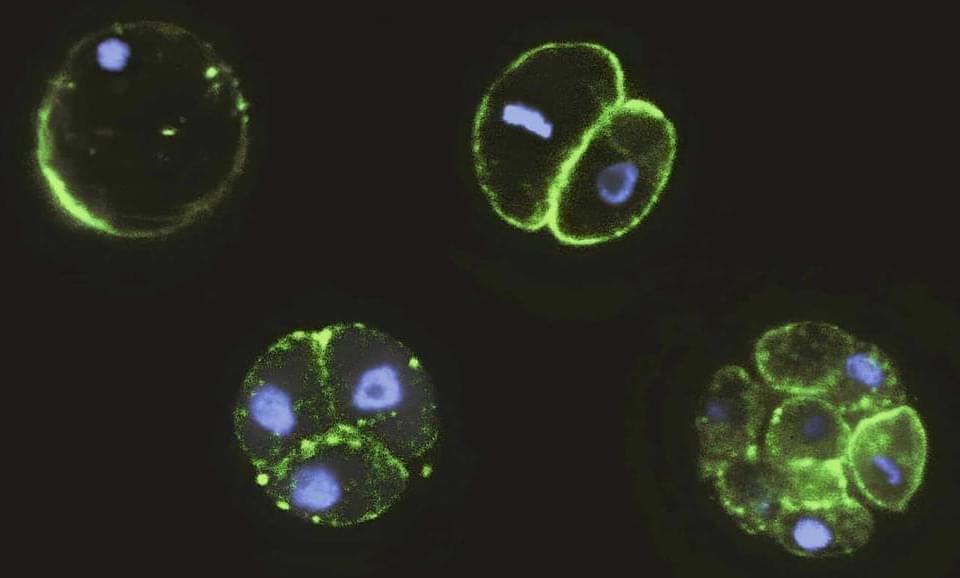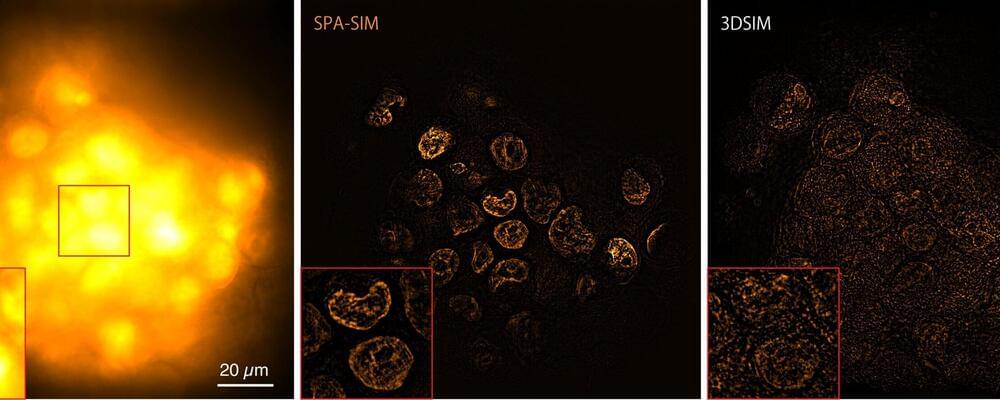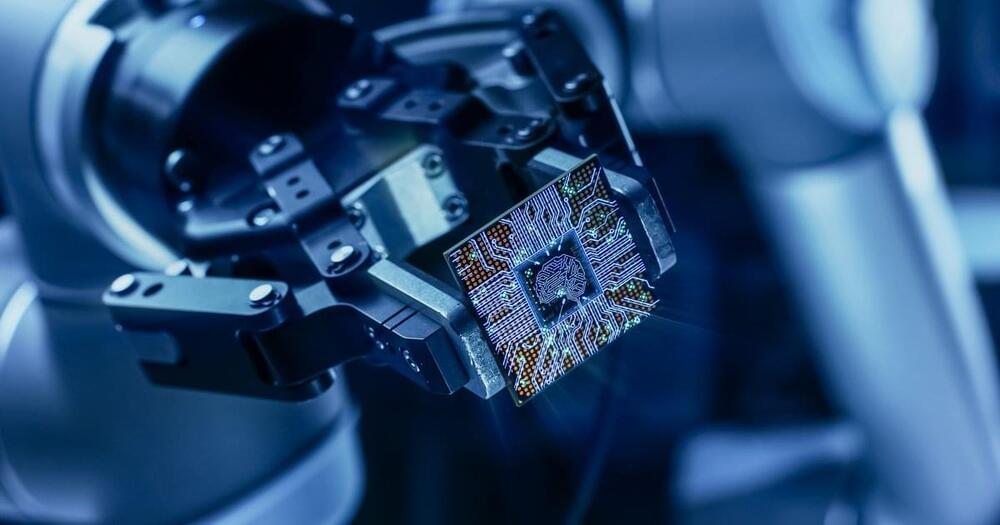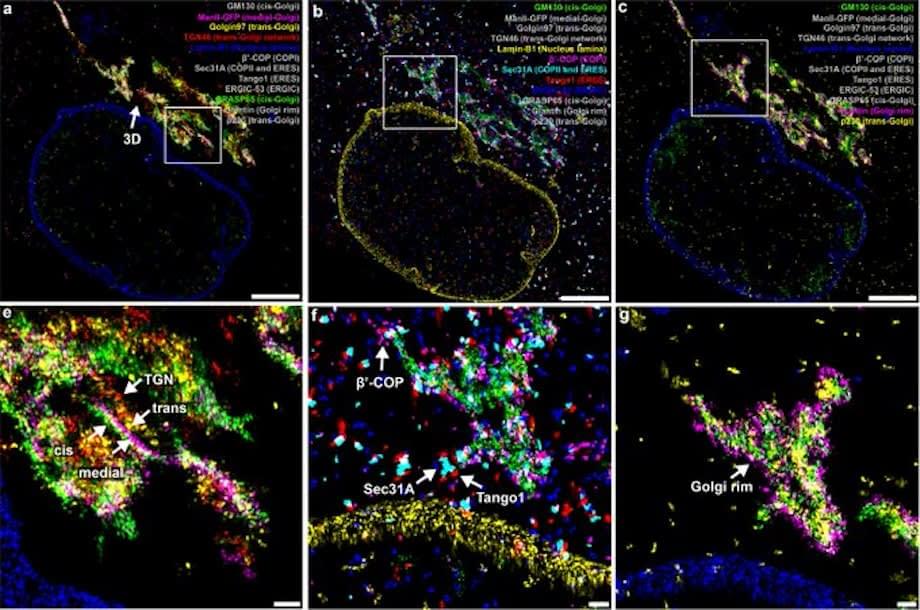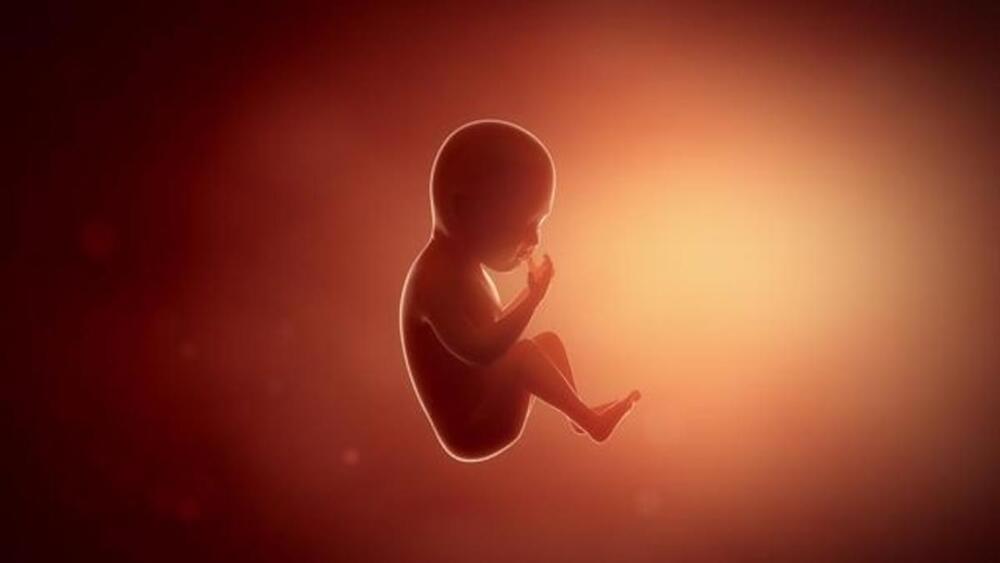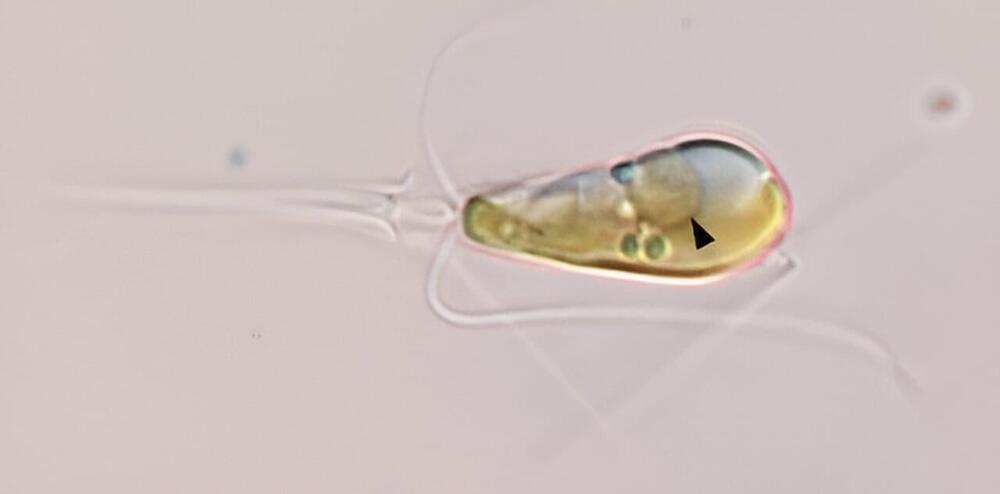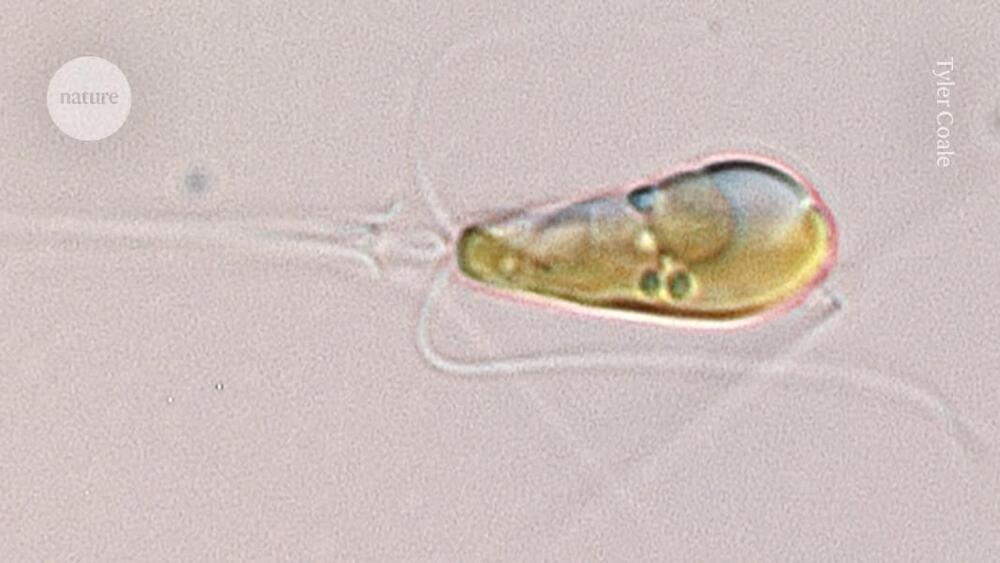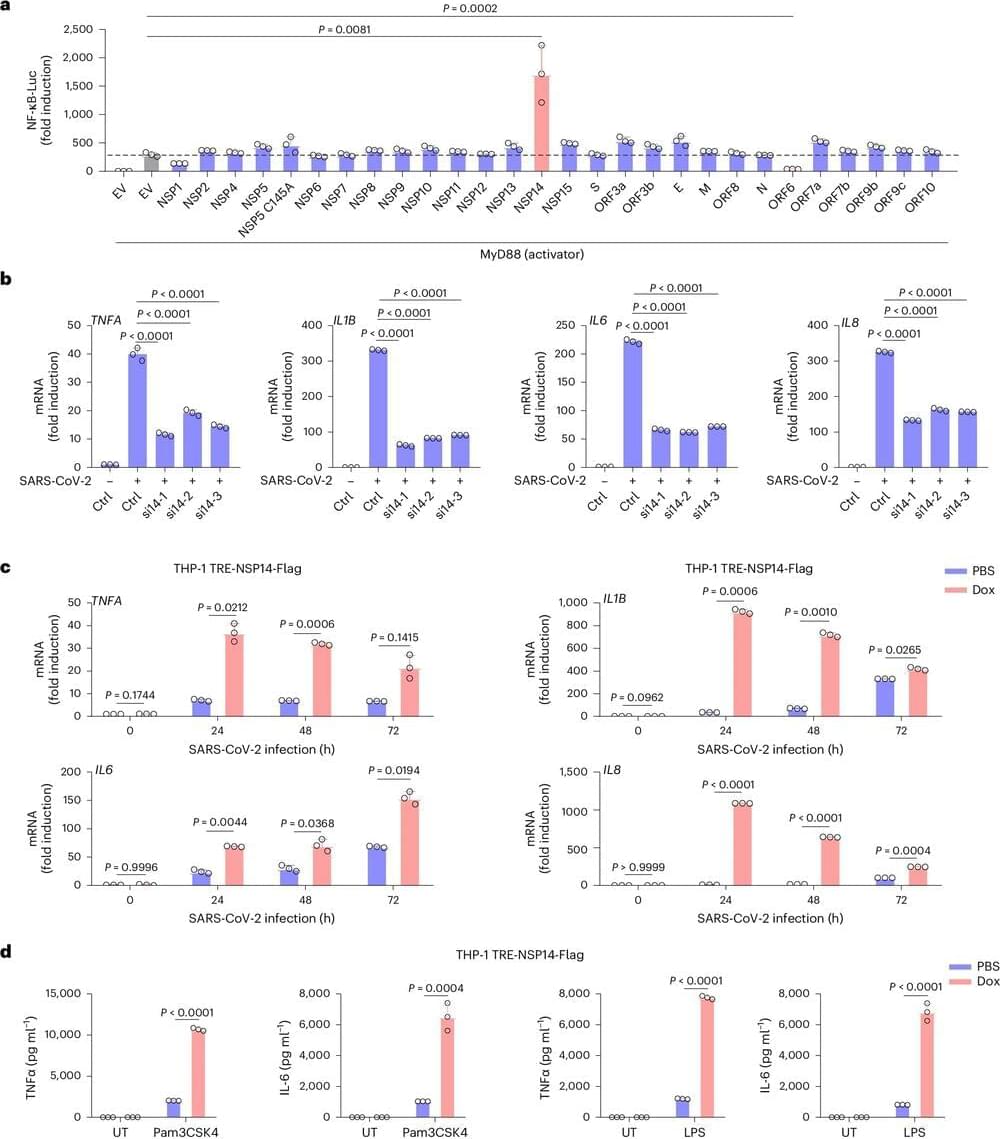
A recent USC study provides new information about why SARS-CoV-2, the virus behind the COVID-19 pandemic, may elicit mild symptoms at first but then, for a subset of patients, turn potentially fatal a week or so after infection. The researchers showed that distinct stages of illness correspond with the coronavirus acting differently in two different populations of cells.
The study, published in Nature Cell Biology, may provide a roadmap for addressing cytokine storms and other excessive immune reactions that drive serious COVID-19.
The team found that when SARS-CoV-2 infects its first-phase targets, cells in the lining of the lung, two viral proteins circulate within those cells—one that works to activate the immune system and a second that, paradoxically, blocks that signal, resulting in little or no inflammation.
